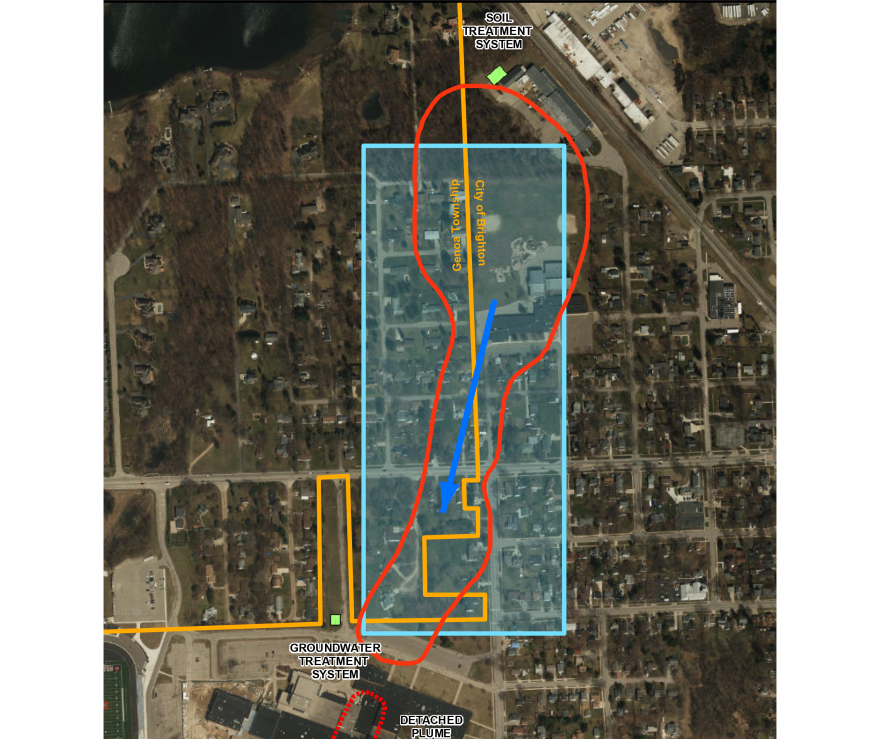More than 100 Brighton homes will be tested for the cancer-causing chemical trichloroethylene (TCE), according to state officials.
The toxic chemical was found in the air of five homes in the neighborhood directly north of Brighton High School, and officials say more could be affected. Another investigation of potentially toxic air has also been opened in a second neighborhood near Whitmore Lake Road north of Lee Road, although the exact location and size of that plume has not been made public.

The Michigan Department of Environmental Quality will test over 60 homes in addition to the 40 originally planned in the first neighborhood.
Rebecca Taylor from MDEQ says that the department detected no air issues at Brighton High School or Creative Kids Daycare.
She also adds that in the five homes that tested positive for vapor intrusion, air purifying units have successfully mitigated the chemical.
Learn more about the vapor intrusion investigation here.
What is trichloroethylene, and how did the plumes grow?
Trichloroethylene, or TCE, is commonly used as an industrial solvent. According to the CDC, "it is used mainly as a solvent to remove grease from metal parts, but it is also an ingredient in adhesives, paint removers, typewriter correction fluids, and spot removers."
The contamination originated from manufacturing chemicals seeping into groundwater. The source of the first plume, the defunct metal finishing manufacturing company Detroit Gaskets, polluted soil and groundwater with the chemical from the late 1940s to the early 1980s.
Rebecca Taylor told the Livingston Daily, "The company (Detroit Gaskets) used trichloroethylene for cleaning up metal parts, as a degreaser, and one woman told me she remembers seeing parts dripping (the chemical) right onto the ground. Back in the day before we had regulations on how chemicals are used, it was alright to hang it on clotheslines and if you have a spill on the ground, so what."
The source of the second plume is Haigh Manufacturing, which released the chemical into the ground in the 1960s and 70s. Other manufacturing companies operated at the site after Haigh closed its doors, and AIRman Products is now located there.
Officials have been monitoring the plumes as a water issue since the early 1990s, when it was first detected. That effort lead to connecting residents to city water in order to avoid well water contamination.
But last year was the first time any air tests had been conducted related to the plumes.
The chemical can leach into homes on top of the plume largely via air vapors, and at high levels, inhaling TCE can cause cancer, and lead to coma or death. Other serious health problems are also a concern, and the chemical can harm unborn babies.







